Discover the Secrets of Tender Himalayan Chicken: A Step-by-Step Guide
If you’ve ever craved a dish that’s rich in flavor, deeply comforting, and surprisingly simple to prepare, then Himalayan chicken just might become your new favorite. This guide will walk you through everything from the origins and nutrition of this flavorful poultry to how you can bring authentic Himalayan taste into your kitchen using ingredients like Himalayan chicken salt and traditional spice blends. Whether you’re curious about Himalayan chicken curry, momo dumplings, or cooking chicken breast on a Himalayan salt block, we’ve got it all covered.
Along the way, you’ll learn what sets the Himalayan chicken breed apart and how to create mouthwatering dishes like Himalayan butter chicken and Himalayan chicken soup. So let’s begin with a warm story from Chef Joudia’s own kitchen and dive into what makes this style of cooking so beloved.
What is Himalayan Chicken?
The Story Behind Himalayan Chicken
The first time I tasted Himalayan chicken, I was in my early 20s, sitting in a friend’s cozy apartment during a snowstorm. She handed me a steaming bowl of richly spiced chicken curry, served over fluffy basmati rice. I still remember the warmth, the balance of turmeric and ginger, and that slight mineral bite of Himalayan salt. It was different from the usual takeout—it felt real. Homemade. Since then, I’ve made it countless times in my own kitchen, testing tweaks to suit weeknight dinners and family cravings alike.
This dish isn’t just another chicken recipe. It’s a deeply rooted meal that blends hearty comfort with subtle heat, traditional techniques, and ancient ingredients like Himalayan chicken salt. The flavor hits in waves—first creamy, then spicy, finally leaving behind a mellow earthiness that makes you want more. And for anyone tired of bland chicken dinners, Himalayan chicken is the kind of flavorful reset you didn’t know you needed.
If you’re familiar with spicy crispy baked chicken thighs or creamy garlic chicken pasta, you’ll appreciate how Himalayan chicken offers a different but equally comforting experience. Think of it as a rustic cousin—less creamy, more aromatic, and just as memorable.
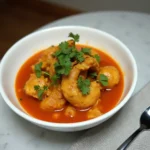
Himalayan Chicken Curry
Ingredients
- 1.5 lbs chicken thighs, boneless and skinless cut into chunks
- 2 tablespoons plain yogurt
- 1 tablespoon lemon juice
- 1 tablespoon ginger garlic paste
- 1 teaspoon turmeric powder
- 1 teaspoon ground cumin
- 1 teaspoon ground coriander
- 0.5 teaspoon chili powder adjust to taste
- 1 large onion, finely chopped
- 2 medium tomatoes, chopped
- 1 cup water or low-sodium chicken broth
- 2 tablespoons oil vegetable oil or ghee
- 1 teaspoon Himalayan chicken salt
- 0.5 teaspoon garam masala
- fresh cilantro chopped, for garnish
- 0.5 cup coconut milk optional, for creamier texture
- 1 green chili optional, for heat
Instructions
- In a bowl, marinate chicken with yogurt, lemon juice, ginger garlic paste, turmeric, and cumin. Let it sit for 30 minutes (overnight is even better).

- Heat oil in a large pan over medium heat. Add chopped onions and sauté until golden brown.
- Stir in tomatoes and cook until soft. Mash them with the back of a spoon.
- Add chili powder, coriander, and salt. Mix well and cook the spices for 1–2 minutes.
- Add the marinated chicken pieces. Cook on high for 3–5 minutes until seared.
- Pour in water or broth. Cover and simmer on low heat for 20–25 minutes until chicken is tender and sauce is thick.
- Stir in garam masala and optional coconut milk. Simmer 3 more minutes.
- Garnish with chopped cilantro and serve hot with rice or flatbread.
Notes
Himalayan Chicken Breed
When people hear “Himalayan chicken,” they often think of a recipe, but there’s actually a heritage breed behind the name. The Himalayan chicken breed refers to hardy birds found in high-altitude regions like Nepal and parts of India. These chickens are smaller, often leaner, and known for their resilience in cold climates.
While it’s rare to find the actual breed in U.S. supermarkets, you can still replicate the flavors and textures by choosing high-quality, free-range or air-chilled chicken thighs or breasts. For instance, I’ve found air-chilled chicken creates less water and more crispiness when searing, just like in crispy garlic parmesan chicken thighs. That’s key when cooking dishes like Himalayan curry chicken, where texture matters just as much as flavor.
The Himalayan chicken breed also tends to be more flavorful due to its natural diet and slower growth, which you can mimic by seasoning early and cooking slowly—especially in curry-based recipes or anti-inflammatory chicken soups.
The Origins of Himalayan Chicken
Himalayan Chicken Curry Recipe
One of the most iconic ways to enjoy Himalayan chicken is through a rich, deeply spiced curry. If you’ve never made curry from scratch, don’t worry—it’s simpler than you think. In fact, the best ones start with basic ingredients: garlic, onion, ginger, and a blend of spices like turmeric, cumin, and coriander. What makes Himalayan chicken curry special is the inclusion of Himalayan salt, which adds a smooth, mineral note to balance the spices.
When I make this at home, I like to add diced tomatoes and simmer the chicken thighs until they’re fall-apart tender. The trick is to cook slowly and let the flavors meld. You can pair it with steamed rice or naan, just like you might with a comforting classic chicken noodle soup. Don’t forget to add a pinch of Himalayan chicken salt right at the end for a finishing touch that makes all the difference.
If you enjoy chicken dishes with depth, like lemon caper chicken piccata, you’ll appreciate the balance in Himalayan curry—vibrant, yet grounded.
Himalayan Chicken Momo
If curry is the soul of Himalayan cuisine, then chicken momo is the heart. These tender dumplings are a beloved street food in Nepal and northern India. Traditionally filled with ground chicken, garlic, ginger, and scallions, the mixture is tucked into thin wrappers and steamed until juicy and flavorful.
Himalayan chicken momo is usually served with a spicy tomato-based dipping sauce that cuts through the richness. It’s like the Himalayan answer to ravioli—comforting, filling, and incredibly satisfying. They’re not difficult to make either; once you get the hang of folding, it becomes meditative.
Whether you’re new to dumplings or a seasoned pro, momo is a must-try. You can even repurpose leftover Himalayan chicken curry for a quick filling, adding fresh cilantro or scallions for brightness.
And while it’s a far cry from a bowl of leftover chicken noodle soup, momo offers that same homemade comfort, wrapped in every bite.
Himalayan Butter Chicken
Less spicy than curry, Himalayan butter chicken leans on creamy tomato sauce, slow-cooked onions, and tender chunks of marinated chicken. The marinade often includes yogurt and spices, which help tenderize the meat while building flavor. It’s a dish that feels indulgent but isn’t heavy.
You’ll find that Himalayan butter chicken uses fewer chilies compared to traditional Indian versions, making it perfect for those who prefer mellow heat. What sets it apart is the subtle inclusion of pink Himalayan salt and fresh cream for a more rounded finish. Serve it with rice or even spooned over flatbread for a cozy dinner that brings everyone to the table.
This dish pairs beautifully with a glass of cool yogurt lassi or even some pink Himalayan salt sprinkled roasted veggies.
Himalaya Fried Chicken
Surprised to see fried chicken here? It’s not the kind you’ll find at fast-food chains. Himalaya fried chicken takes influence from Tibetan spices—like Sichuan peppercorn, ginger, and cumin—then coats chicken pieces in a spiced flour mixture and shallow fries them until crisp. It’s less greasy, more aromatic, and often served with pickled vegetables or chili chutney.
It’s a great way to switch things up if you’re tired of standard fried chicken. The seasoning mix alone is worth keeping around—it works wonders on roasted cauliflower or baked tofu, too.
If you’re already a fan of crispy chicken thigh recipes, try this Himalayan version next time for a refreshing twist.
Himalayan Chicken Soup
Lastly, Himalayan chicken soup deserves its spotlight—not just as a dish, but as a soothing ritual in many high-altitude kitchens. Unlike the clear broths we’re used to, this soup begins with layers of warming aromatics: turmeric, bay leaf, crushed garlic, and slow-simmered chicken, often bone-in for depth. As the broth develops over low heat, it picks up a golden hue and a medicinal, slightly earthy aroma that hints at its ancient roots in Ayurvedic-style healing.
Some families add barley or hand-torn wheat noodles to make it heartier. Others keep it light, floating fresh herbs like cilantro, fenugreek, or even mustard greens on top. Carrots, potatoes, and even radishes are sometimes simmered in to add body and comfort. The result is a broth that feels alive—nutrient-dense and deeply flavorful without being heavy.
It’s more than just a soup. It’s the kind of meal you bring to a friend who’s under the weather, or one you sip slowly during a cold, quiet evening. The blend of ginger and garlic helps warm you from within, while the turmeric offers its anti-inflammatory properties, making this bowl both food and gentle remedy.
Served with flatbread or plain rice, Himalayan chicken soup stands proudly next to American comfort staples like creamy chicken noodle soup. It’s a reminder that sometimes the simplest combinations—fresh chicken, warming spices, and a little time—are what our bodies crave the most.
Ingredients & Step-by-Step Instructions
Ingredients for Himalayan Chicken Curry (Serves 4)
- 1.5 lbs chicken thighs (boneless, skinless), cut into chunks
- 2 tablespoons plain yogurt
- 1 tablespoon lemon juice
- 1 tablespoon ginger garlic paste
- 1 teaspoon turmeric powder
- 1 teaspoon ground cumin
- 1 teaspoon ground coriander
- ½ teaspoon chili powder (adjust to taste)
- 1 large onion, finely chopped
- 2 medium tomatoes, chopped
- 1 cup water or low-sodium chicken broth
- 2 tablespoons oil (vegetable or ghee)
- 1 teaspoon Himalayan chicken salt
- ½ teaspoon garam masala
- Fresh cilantro, chopped (for garnish)
Optional add-ins: ½ cup coconut milk (for creamier texture), 1 green chili (for heat)
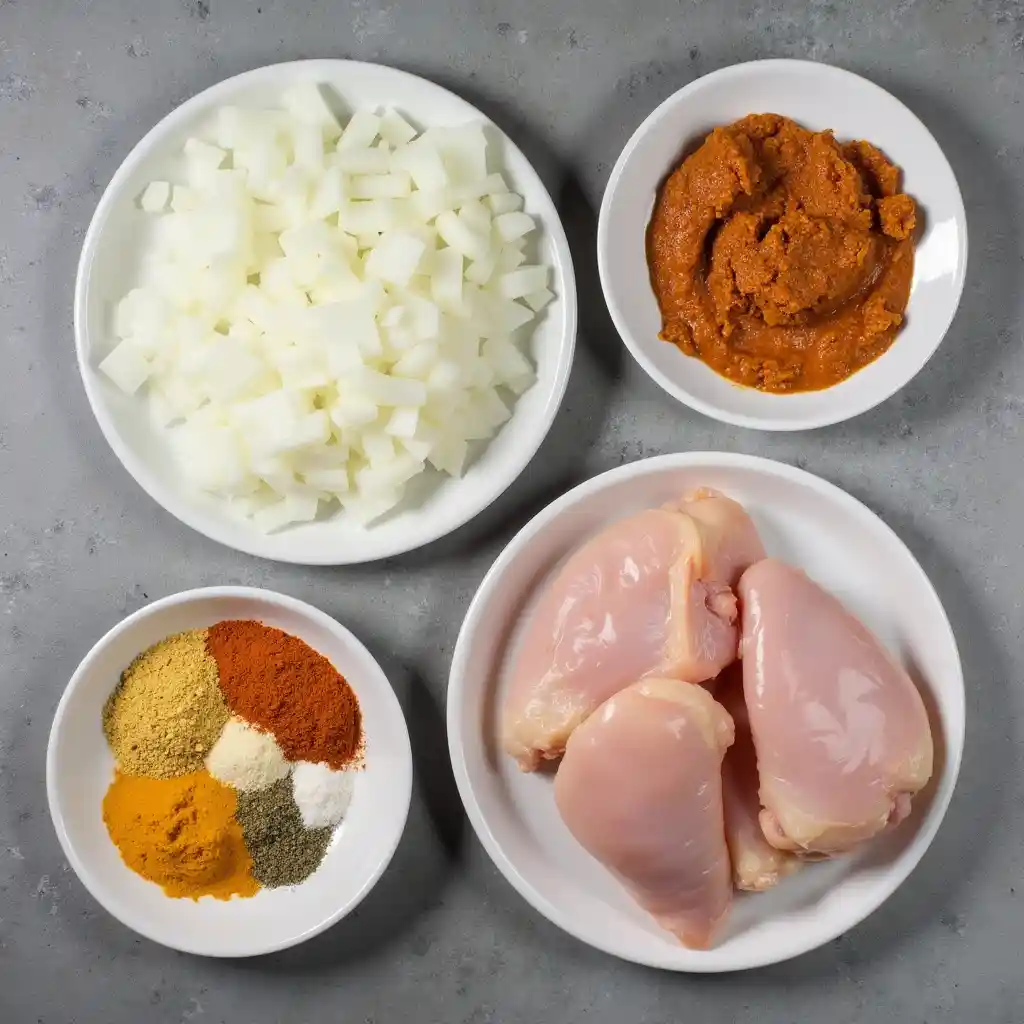
Step-by-Step Instruction
- In a bowl, marinate chicken with yogurt, lemon juice, ginger garlic paste, turmeric, and cumin. Let it sit for 30 minutes (overnight is even better).
- Heat oil in a large pan over medium heat. Add chopped onions and sauté until golden brown.
- Stir in tomatoes and cook until soft. Mash them with the back of a spoon.
- Add chili powder, coriander, and salt. Mix well and cook the spices for 1–2 minutes.
- Add the marinated chicken pieces. Cook on high for 3–5 minutes until seared.
- Pour in water or broth. Cover and simmer on low heat for 20–25 minutes until chicken is tender and sauce is thick.
- Stir in garam masala and optional coconut milk. Simmer 3 more minutes.
- Garnish with cilantro and serve hot with rice or flatbread.
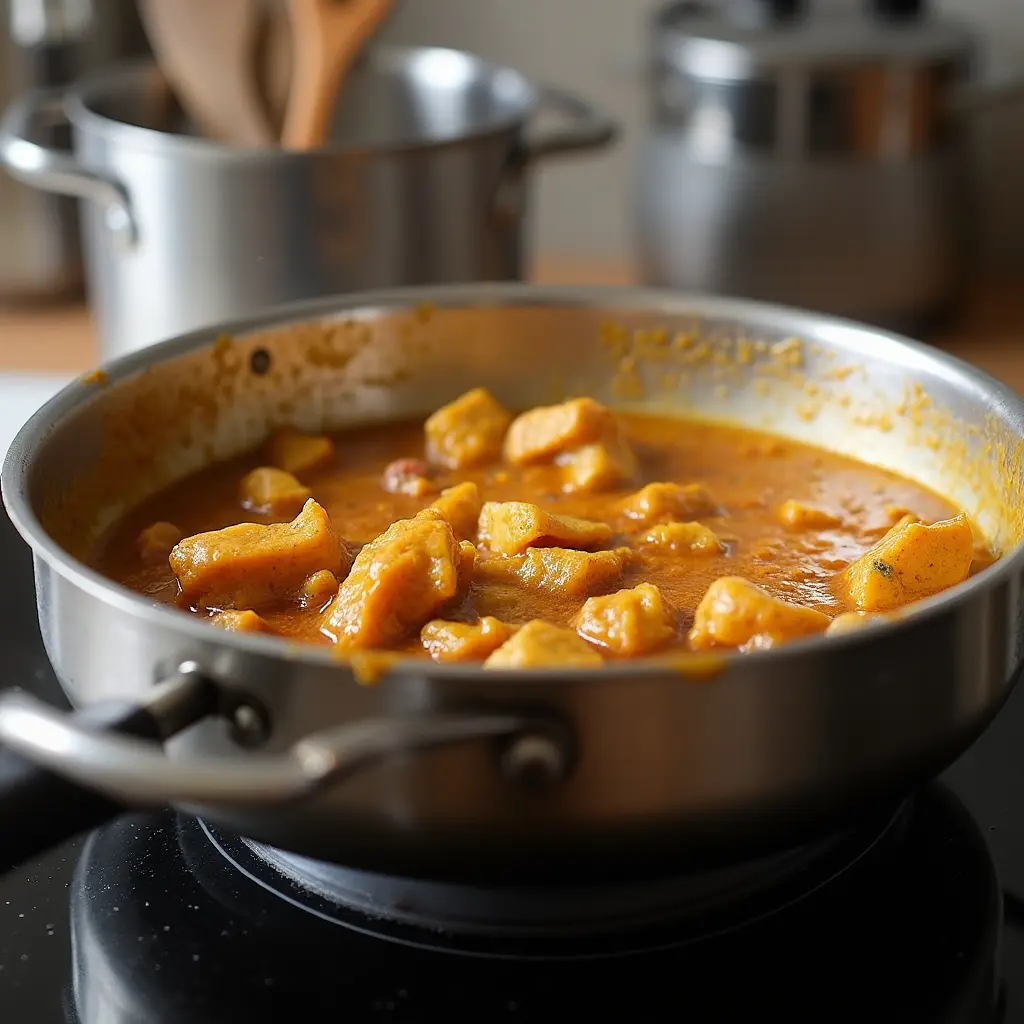
Pro Tips & Nutritional Info
Tips for Best Results
- Marinate longer for deeper flavor. Even 2 hours makes a big difference.
- Use chicken thighs for juicier results, especially in slow-cooked curries.
- Add coconut milk near the end for a creamier curry without overwhelming spice.
- Use a heavy-bottomed pan to avoid burning the spices.
- Garnish generously with fresh herbs like cilantro or even a squeeze of lime.
If you’re trying other comforting meals like chicken soup or leftover chicken noodle soup, you can repurpose any leftover Himalayan chicken curry into a flavorful base.
Nutritional Info (Per Serving)
| Nutrient | Amount |
|---|---|
| Calories | 340 kcal |
| Protein | 27 g |
| Fat | 20 g |
| Saturated Fat | 6 g |
| Carbohydrates | 10 g |
| Sugar | 4 g |
| Sodium | 590 mg |
Cooking Techniques for Himalayan Chicken
Cooking Chicken Breast on a Himalayan Salt Block
Cooking on a Himalayan salt block isn’t just a trend—it’s a way to bring out natural flavors without over-seasoning. The salt block retains heat evenly, searing chicken breasts while subtly infusing them with minerals. If you’ve never tried it, imagine grilling chicken with a built-in flavor enhancer.
To get started, heat your salt block gradually over 30–45 minutes, then place well-dried, seasoned chicken breast directly on top. You’ll get a lovely char and gentle seasoning in one go—no marinade needed. This method also locks in moisture, something you’ll notice with each juicy bite.
For tips on safe heating and handling of salt blocks, Healthline offers great insights into Himalayan salt and its culinary applications. They also explain the mineral content that makes this salt such a unique cooking surface.
Want a go-to pairing? Serve your salt block chicken with a side of turmeric rice or even a bowl of chicken soup made anti-inflammatory, to double up on wellness.
Himalayan Salt Block Chicken Recipes
One of the easiest ways to experiment with Himalayan chicken is by using your salt block for grilled recipes. You can try thin-sliced chicken breast, pre-marinated in yogurt and garlic, or go with simple spice rubs like paprika, black pepper, and ginger. The beauty is that you don’t need added salt—just focus on balance and texture.
Salt block cooking also supports better digestion and mineral absorption, especially when combined with hydrating foods like cucumbers or broths. This Healthline article on Himalayan salt benefits dives into those subtle health advantages, such as potassium and magnesium support.
If you’ve tried cooking on cast iron, you’ll find a familiar process here—but with less mess and more flavor. In my kitchen, I alternate between my salt block and oven roasting, depending on the mood. For something fuss-free, try salt block seared chicken served over sautéed greens and quinoa. Or go full cozy and enjoy it with leftover classic chicken noodle soup.
This method is especially handy for batch-cooking or meal prep—you can grill several pieces of chicken at once without overcrowding the pan. The salt surface keeps flavors consistent, and clean-up is surprisingly easy with a quick brush and rest.
You can also find us on Facebook & Pinterest!
Frequently Asked Questions About Himalayan Chicken, Salt, Cooking Methods, and Signature Dishes
What is Himalayan chicken?
Himalayan chicken refers both to a cooking style and, in some regions, to a breed of chicken found in high-altitude areas like Nepal. In recipes, it typically involves deep spices, aromatic herbs, and the signature use of Himalayan salt. Whether used in curries, soups, or dumplings, it brings comforting warmth and earthy complexity to your table. Even if you’re using standard store-bought chicken, the use of Himalayan flavors can transform the dish entirely.
The breed, known for resilience in cold climates, produces leaner, more flavorful meat. But here in the U.S., simply opting for high-quality air-chilled or organic chicken gives you the right texture and taste for Himalayan chicken dishes.
What is Himalayan chicken salt used for?
Himalayan chicken salt is a pink, mineral-rich salt often used to season poultry dishes during or after cooking. It enhances flavor while adding trace minerals like magnesium and potassium. In recipes like Himalayan butter chicken or fried chicken, it subtly elevates each bite without overpowering the spices.
Some cooks even finish a dish with a pinch of Himalayan salt for a gentle crunch and refined flavor. You can use it in rubs, brines, soups, or even in sauces like those served with chicken piccata or garlic chicken pasta.
How do you cook chicken on a Himalayan salt block?
Cooking chicken on a Himalayan salt block is all about slow heat and even distribution. Start by heating your block on low, then gradually increase temperature over 30 to 45 minutes. Once hot, place seasoned chicken (or even unseasoned) directly on the block.
The salt infuses subtle flavor while locking in juices. There’s no need for extra salt—just focus on herbs or spices like thyme, turmeric, or chili flakes. It’s a fantastic way to try new methods, especially if you already enjoy salt-forward recipes like those made with pink Himalayan salt.
What makes Himalayan butter chicken different?
Himalayan butter chicken is typically milder and more aromatic than Indian butter chicken. It’s built on a base of yogurt-marinated chicken, slow-cooked with tomatoes, garlic, and Himalayan salt. The cream is added near the end, giving a smooth texture without overwhelming spice.
It stands apart for its subtle layering—spice without heat, richness without heaviness. That balance is what makes it perfect for weeknight dinners or gatherings where you want everyone to enjoy the same dish, kids included.
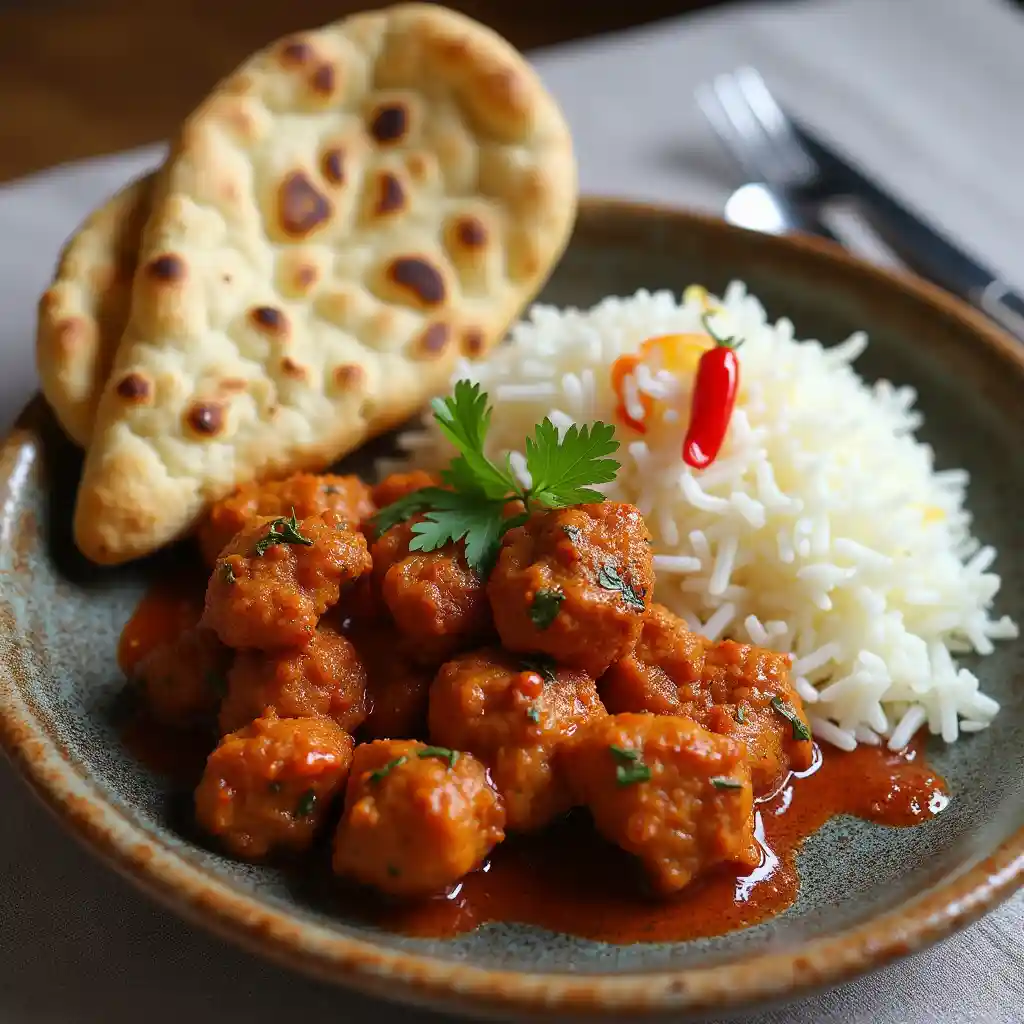
Conclusion
Himalayan chicken isn’t just one recipe—it’s a comforting approach to cooking that celebrates balance, tradition, and warmth. Whether you’re trying Himalayan chicken curry, steaming up juicy momo dumplings, or grilling on a salt block, the goal is the same: flavor that feels familiar yet exciting.
You don’t need specialty groceries to enjoy these dishes. Just a good piece of chicken, a few pantry spices, and Himalayan salt can bring the taste of the mountains into your kitchen. So next time you’re looking to mix up your chicken routine, reach for something bold, fragrant, and soul-satisfying.
Try it once, and you’ll see why Himalayan chicken has a quiet way of becoming a household favorite.

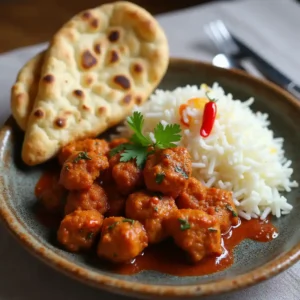





3 thoughts on “Himalayan Chicken Like Never Before – Quick, Flavorful, And Comforting”